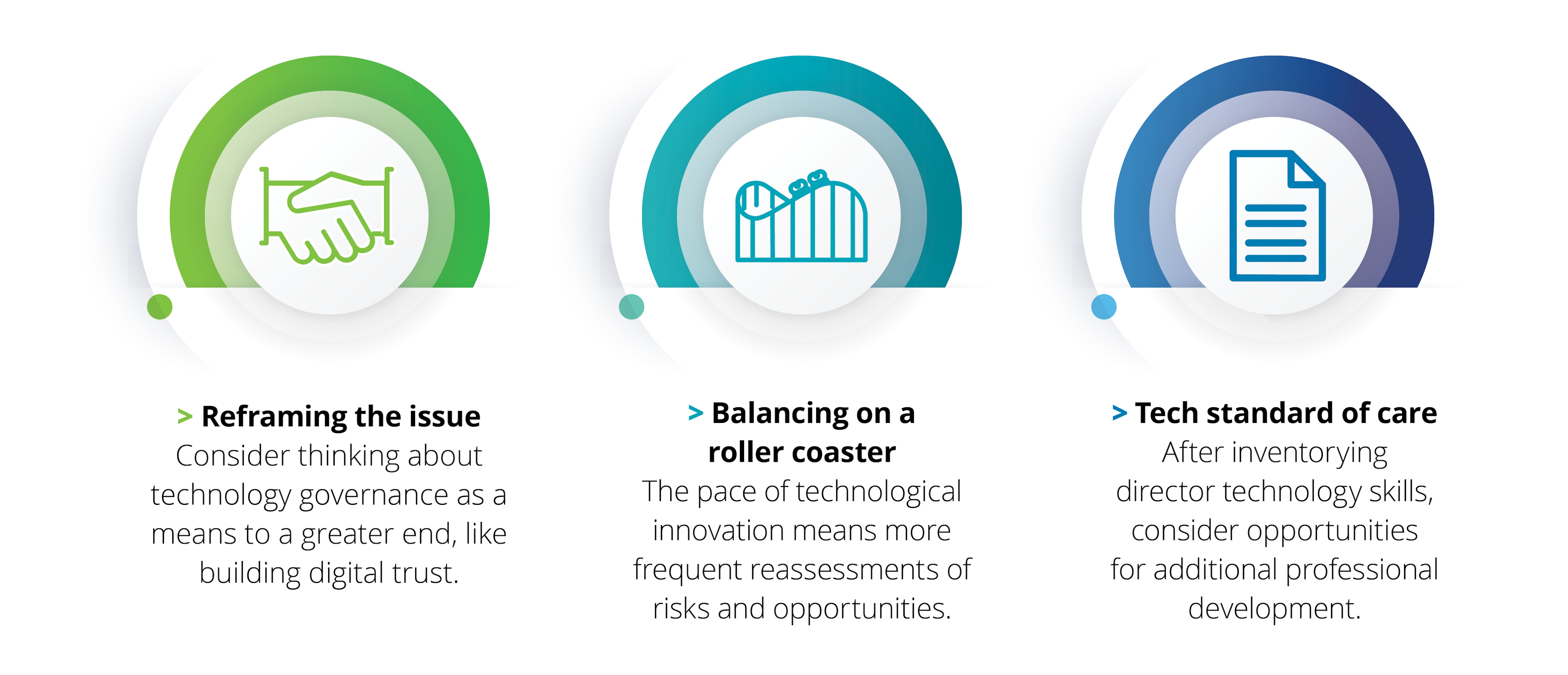Holistic governance through technology transformation has been saved

Perspectives
Holistic governance through technology transformation
On the board’s agenda, September 2023
This edition of On the board’s agenda features a conversation with Joanna Burkey, chief information security officer at HP Inc. and board member at Overstock.com/Bed Bath & Beyond, on how to govern holistically through transformative technological change. The dialogue was led by Irfan Saif, Deloitte’s US chief information officer and member of Deloitte US Board of Directors and Deloitte Global Board of Directors.
Why it matters
In the age of artificial intelligence (AI) and similar innovations, the board’s governance of technology has garnered increasing levels of attention. But the rapid pace of advancement has brought a shifting set of new (and often unfamiliar) opportunities and risks. Perhaps due to such complexities, there is renewed interest in identifying the technology skills directors may need to provide oversight in this area. Like any other area of board governance, what works varies widely across each company and industry. Nevertheless, when dealing with potentially transformative technologies, there are a few guideposts that may help boards govern more holistically.

Holistic governance through (potentially) transformative technology
The board’s role around technology—whether it be novel, innovative, or (potentially) transformative—centers on governance and strategy. How the board engages in this area may also be partially shaped by the array of technology skills brought by individual directors. It may be helpful to get the views of subject-matter specialists who deal with this area of governance on a day-to-day basis. The following summarizes a dialogue on these topics between Irfan Saif and Joanna Burkey.
Irfan Saif: In the past few years, we’ve seen a rapid and quickening pace of advancement across multiple areas of technology, including many with transformative potential. Does the stage of development or level of potential for any given innovation change how directors should think about technology governance?
Joanna Burkey: When technology is still in its early development or rapid growth phases, creating a cohesive strategy may be difficult. From a governance perspective, it’s an opportunity to pinpoint where the company is on the technology opportunity/risk spectrum. Where the board and company land on that spectrum will determine the outlines of any technology strategy. This is something that is subject to change, perhaps even by use case, so the arrival of a potentially transformative technology is a good time to reassess. After all, the innovation of the moment could be potentially transformative for one company but not worth the investment for another. At its core, this is an exercise balancing between opportunities and risks, a familiar and well-trodden trade-off for boards.
In the technology realm, there is an aspect to this that we may sometimes overlook. Just like opportunities and risks, technology is often similarly characterized as a trade-off between ease of use and vulnerability. But in practice, it may be helpful to keep in mind that neither end of the ease-of-use/vulnerability spectrum is “real.” Because if you sacrifice all user friendliness for security (or vice versa), then you have a technology that doesn’t do anything. Take the cloud, which has transformed how we use and think about data. The only way the cloud is invulnerable is when you turn off the power to every server. For any type of technology innovation to have value, it will have some level of vulnerability.

Recommendations
Future of tech: Artificial intelligence (AI)
Board Practices Quarterly, August 2023



